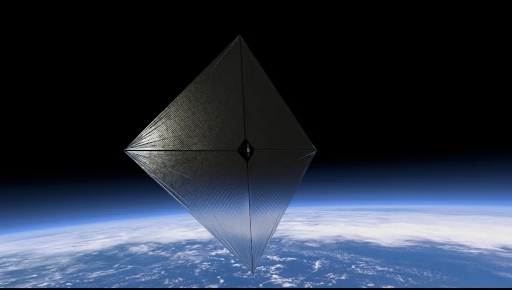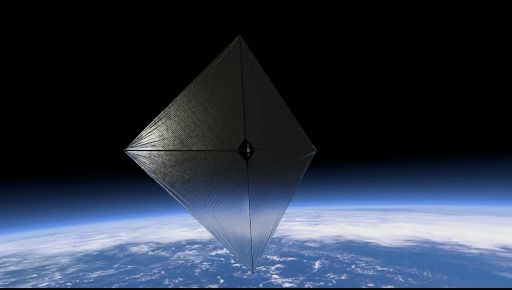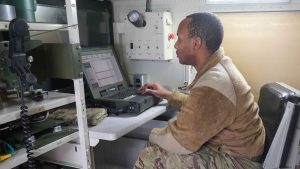
Scientists at the California Institute of Technology have taken a major step toward developing lightsails that could one day carry tiny spacecraft to distant star systems.
The new findings detail a method to measure the force of laser light on what are known as “ultrathin membranes.” This is research that could help advance the Breakthrough Starshot Initiative’s vision of laser-driven space travel.
Launched in 2016 by the late Stephen Hawking and tech investor Yuri Milner, Breakthrough Starshot aims to send miniature probes to Alpha Centauri, the closest star system to Earth. The plan relies on high-powered lasers on Earth pushing delicate sail-driven probes in the cosmos like the wind does for sailboats here on the planet, allowing the craft to achieve record-breaking speeds without the need for a chemical propellant.
Lightsails are a more generic form of solar sail, in that they use radiation pressure from a light source to generate propulsion. Radiation pressure is the transfer of momentum from radiation striking a surface like the wind does to canvas sails here on Earth. Photons have no mass, but they still transfer some of their momentum when they hit an object, pushing it ever so slightly. A single photon doesn’t make much of a difference, but trillions and trillions of photons all hitting a surface add up, especially in the vacuum of space.
Radiation in the form of sunlight is therefore enough to push interplanetary spacecraft thousands of miles off course, however, so this effect must be accounted for when sending probes to Mars or other planets.
But a higher-energy version of this phenomenon could use a ground- or space-based laser beam to push a lightsail on a spacecraft in a more directed way. With the beam providing a source of constant pressure on the sail, the cumulative effect of this radiation pressure adds up to speeds significantly faster and more reliable than you could get from complicated rockets using chemical propulsion.
“The lightsail will travel faster than any previous spacecraft, with potential to eventually open interstellar distances to direct spacecraft exploration,” Caltech’s Harry Atwater, the Otis Booth Leadership Chair of the Division of Engineering and Applied Science, said in a Caltech statement.
Breaking space news, the latest updates on rocket launches, skywatching events and more!
Measuring the force of light on a sail
Atwater’s team developed a test platform to measure how lasers exert force on a microscopic “trampoline” of silicon nitride, just 50 nanometers thick. The miniature sail, a square sheet 40 microns on each side, is tethered at the corners by silicon nitride springs and vibrates when struck by a laser. By detecting those tiny movements, researchers can calculate the force of the laser beam and its power.
“There are numerous challenges involved in developing a membrane that could ultimately be used as lightsail. It needs to withstand heat, hold its shape under pressure, and ride stably along the axis of a laser beam,” Atwater said. “But before we can begin building such a sail, we need to understand how the materials respond to radiation pressure from lasers. We wanted to know if we could determine the force being exerted on a membrane just by measuring its movements. It turns out we can.”
The study’s lead authors, postdoctoral scholar Lior Michaeli and graduate student Ramon Gao, built a specialized setup called a common-path interferometer. This enables precise measurement of the membrane’s motion by canceling out background noise such as small vibrations in the lab from equipment or even people talking.
“We not only avoided the unwanted heating effects but also used what we learned about the device’s behavior to create a new way to measure light’s force,” Michaeli said. Gao added that the platform can measure side-to-side motion and rotations, paving the way for future lightsail designs that can self-correct if they stray from the laser beam.
Ultimately, the team hopes to integrate advanced nanomaterials and metamaterials to stabilize lightsails during their journey. “This is an important stepping stone toward observing optical forces and torques designed to let a freely accelerating lightsail ride the laser beam,” Gao said.
There are several light sail projects in the works, and NASA deployed a solar sail last year, though it has encountered some mechanical issues, highlighting the importance of the Caltech team’s research in further refining the design of these sails.
The results were published on Jan. 30 in the journal Nature Photonics,








